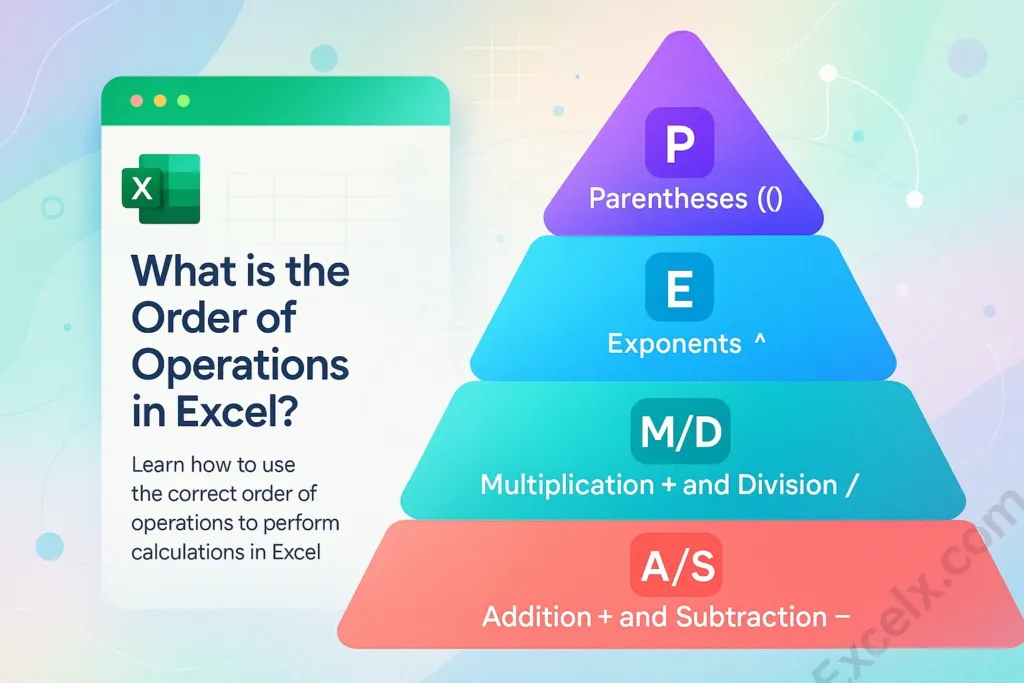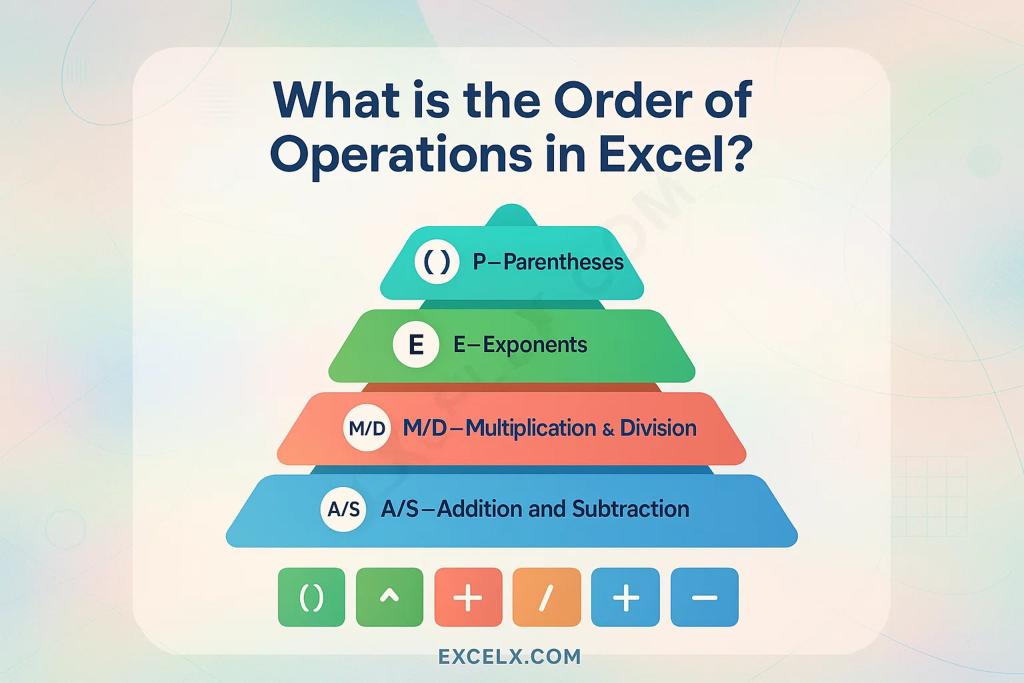Have you ever written a formula that looked perfectly correct, but Excel gave you a completely unexpected and wrong answer? You check every cell reference, you know the numbers are right, but the result is just… off.
This frustrating experience is almost always caused by a misunderstanding of the Excel Order of Operations.
Just like in your high school math class, Excel doesn’t simply calculate a formula from left to right. It follows a strict set of rules to decide what to calculate first, second, and third. This set of rules is commonly known by the acronym PEMDAS. Understanding this concept is the difference between a formula that works and one that causes critical errors.
Key Highlights
- What is PEMDAS? PEMDAS is an acronym that stands for Parentheses, Exponents, Multiplication and Division (from left to right), and Addition and Subtraction (from left to right). It’s the exact order Excel follows for all calculations.
- Why It Matters: Without following this order, your formulas can produce incorrect results, leading to flawed data and bad decisions.
- The Golden Rule: To control the order of calculation, use parentheses
(). Excel will always calculate what’s inside parentheses first. - Common Acronyms: You might also know this concept as BODMAS (Brackets, Orders, Division/Multiplication, Addition/Subtraction). They mean the same thing.
What is the Order of Operations in Excel?
The order of operations is a universal rule in mathematics that dictates the sequence in which calculations must be performed to ensure everyone gets the same, correct answer from a single expression. Excel follows this rule precisely.
Let’s break down the PEMDAS acronym, which defines this order.

1. P – Parentheses ()
Anything enclosed in parentheses is always calculated first. If you have nested parentheses (parentheses inside other parentheses), Excel calculates the innermost set first and works its way out.
2. E – Exponents (^)
Next, Excel handles any exponents (e.g., raising a number to a power). The exponent operator in Excel is the caret symbol (^).
3. M & D – Multiplication (*) and Division (/)
After parentheses and exponents, Excel performs all multiplication and division. This is a crucial point: Multiplication and Division have equal importance. Excel simply evaluates them from left to right as they appear in the formula.
4. A & S – Addition (+) and Subtraction (-)
Finally, Excel performs all addition and subtraction. Just like multiplication and division, these have equal importance and are calculated from left to right.
A Practical Example: PEMDAS in Action
Let’s see why this matters. Consider the following formula:
=10 + 5 * 2
- Without PEMDAS (Incorrect): A left-to-right calculation would be
10 + 5 = 15, and then15 * 2 = 30. This is wrong. - With PEMDAS (Correct): Excel sees the multiplication first. It calculates
5 * 2 = 10. Then it performs the addition:10 + 10 = 20. This is the correct answer.
How to Control the Order of Operations
The best part about PEMDAS is that you are in complete control. By using parentheses, you can force Excel to calculate any part of your formula first.
Let’s go back to our example. What if you did want to add 10 and 5 first? You would simply enclose that part in parentheses:
=(10 + 5) * 2
Now, Excel will follow these steps:
- Parentheses first:
10 + 5 = 15 - Multiplication next:
15 * 2 = 30
By strategically placing parentheses, you can ensure your formulas are always calculated exactly the way you intend.
Frequently Asked Questions (FAQs)
Q: Does Excel follow PEMDAS or BODMAS?
A: Both! PEMDAS (Parentheses, Exponents, Multiplication/Division, Addition/Subtraction) and BODMAS (Brackets, Orders, Division/Multiplication, Addition/Subtraction) are just different acronyms for the exact same mathematical order of operations. Excel follows this rule perfectly.
Q: How are multiplication and division handled if they have the same priority?
A: When operators have the same priority (like * and /), Excel evaluates them from left to right. In the formula =10/2*5, Excel first calculates 10/2=5, and then 5*5=25.
Q: How can I make sure my formulas are easy to read?
A: Use parentheses even when they aren’t strictly necessary. For example, =(A2*B2) + (C2*D2) is much easier for a human to read and understand than A2*B2+C2*D2, even though both produce the same result.
You’ve Mastered the Rules of Excel Math!
You now understand the critical importance of the Order of Operations. By keeping PEMDAS in mind and using parentheses to control the flow of your calculations, you can build complex, accurate formulas with confidence and easily troubleshoot any that give you unexpected results.
Next Step: Now that you understand the order, let’s take a closer look at the symbols themselves. Learn more in our next guide (coming soon): Using Operators in Excel Formulas.
What’s the Most Confusing Formula You’ve Ever Had to Fix?
Have you ever spent ages on a formula only to realize the fix was a simple pair of parentheses? We’ve all been there!
Share your stories or ask any questions about PEMDAS in the comments below!

